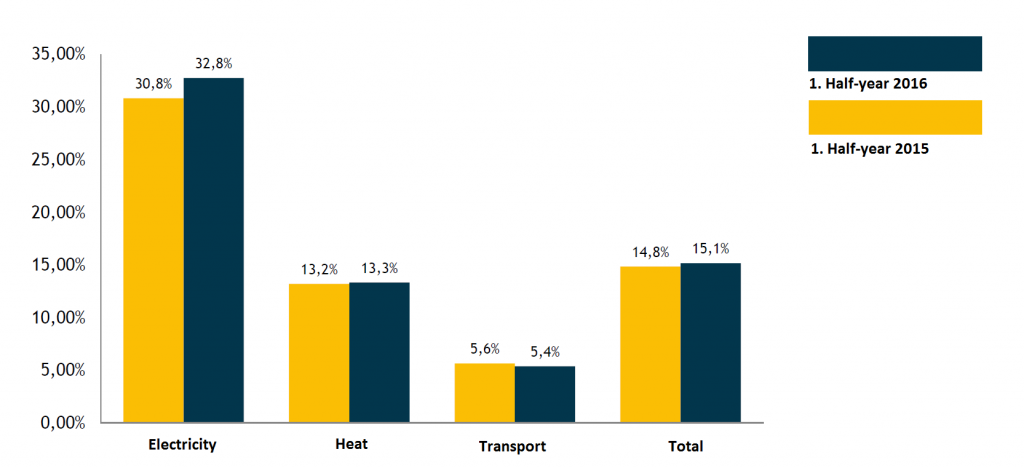Green power covers record share of 39 percent of German demand in May. Further efforts are required in the heat and transport sector.

This was the biggest monthly share since at least 2012 according to Montel. The increase in market share from 35% in April and 33% for 2015 in total was largely due to a boost in offshore wind power production and a decline in overall demand, the data showed. Power demand declined 0.9% year on year in May to 43.97 TWh, while offshore wind production rose 60% to 1.01 TWh over the same period. Among other renewables, onshore wind power generation increased by 5.1% to 5.79 TWh and photovoltaic production rose 5.6% to 5.23 TWh.
Nuclear output fell 35% to 5.14 TWh, lignite output rose 6.3% to 11.49 TWh, while hard coal output increased by 11% to 7.65 TWh. In the first five months of the year, German power use declined 1.5% to 234.47 TWh, while net exports amounted to 23 TWh.
Germany aims to raise the share of green power in consumption to up to 45% by 2025 and 60% by 2035.
While the share in the electricity demand rose even further, the expansion of renewables stagnated in the heat and transport sector. The share of renewable energies in the heat demand only rose by 0.1 percent to a total of 13.3 percent compared to the first two quarters of 2015. In the transport sector the share even fell by 0.2 percent to a total of 5.4 percent. Figure 1 shows the differences between the first two quarters of 2015 and 2016.

Renewable energy development in 2016 (source: Bundesverband Erneuerbare Energien e.V.)
With a share of 15 percent in the total energy demand, further efforts for the expansion of renewable energies are necessary. “By implication this means that for the decarbonization we still have 85 percent of the work ahead of us,” Hermann Falk, executive director of the German Renewable Energy Federation commented.



